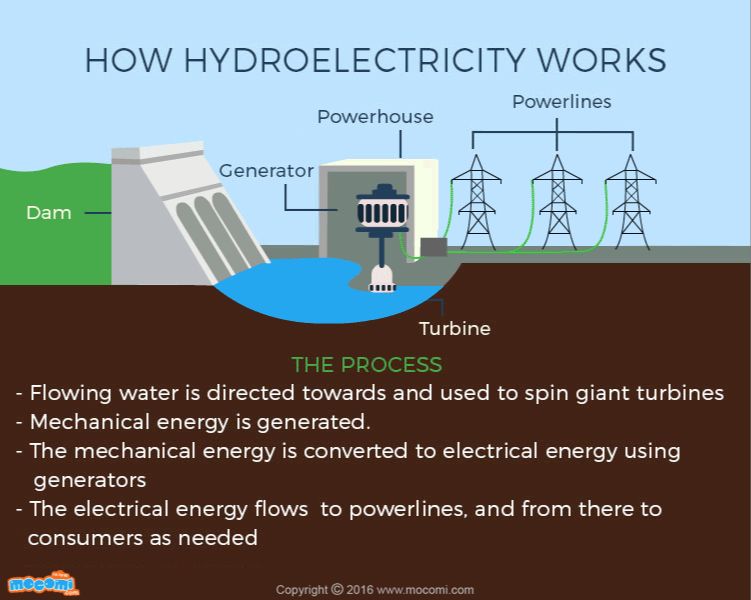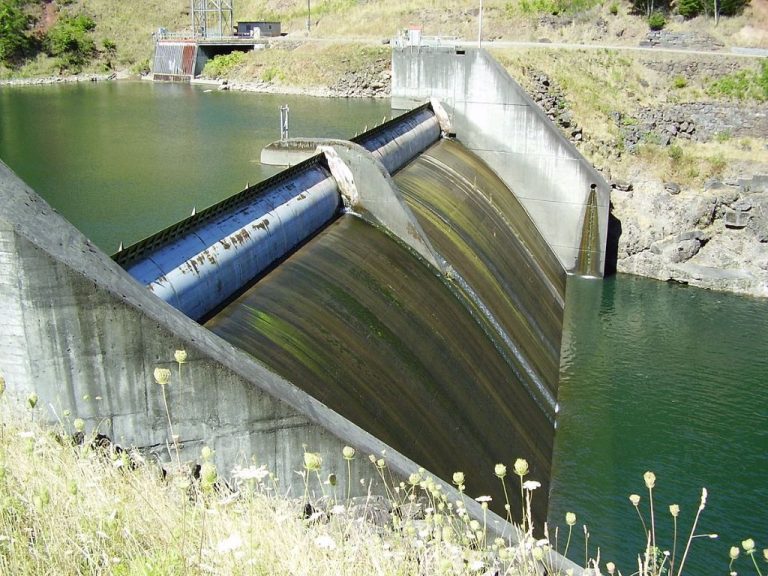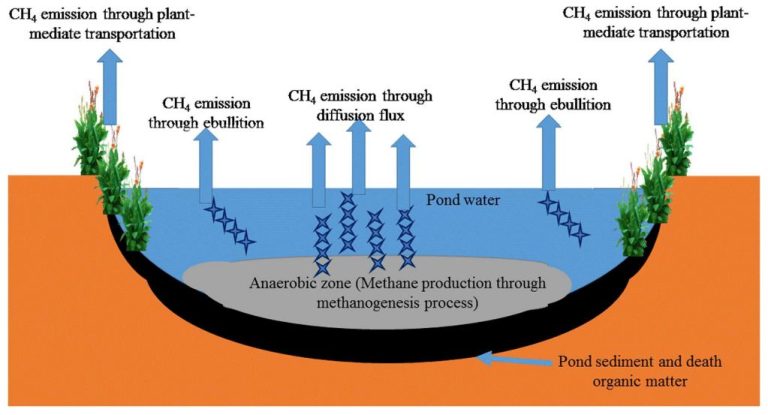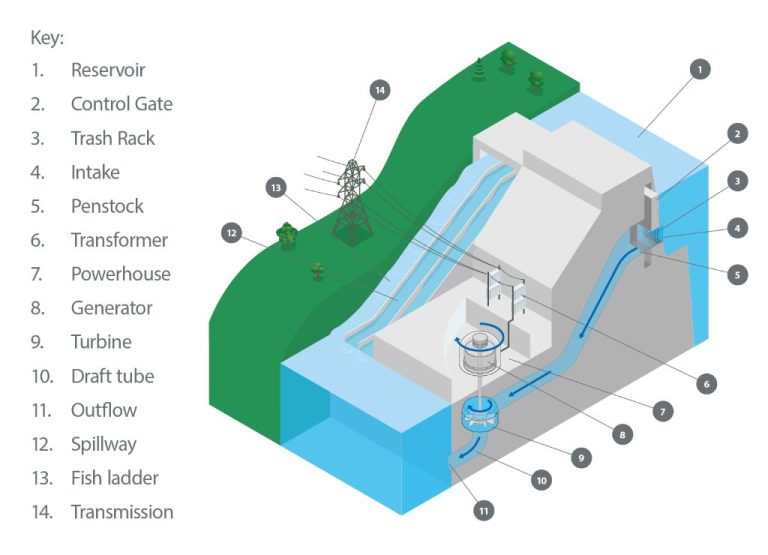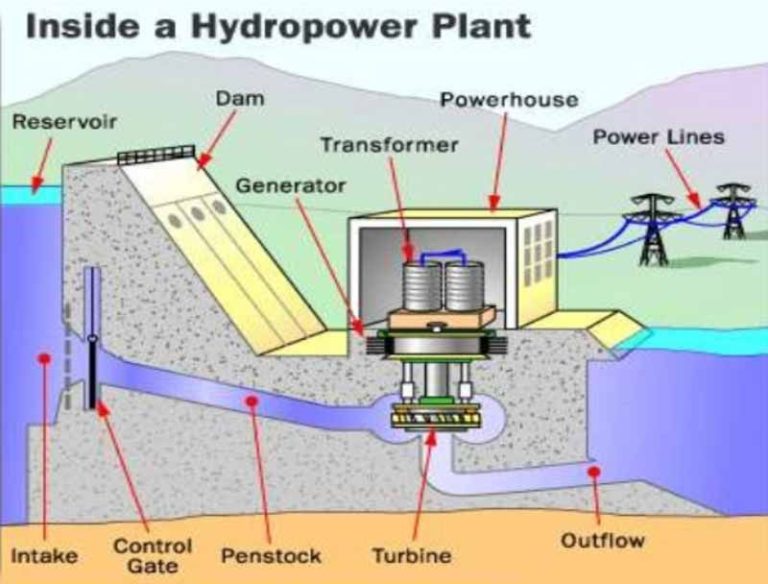Does Hydropower Rely On The Water Cycle?
What is hydropower?
Hydropower is a renewable source of energy that generates electricity by using flowing water to turn turbines connected to generators. According to the Merriam-Webster dictionary, hydropower is defined as “hydroelectric power.”
The term hydropower refers specifically to the process of harnessing the energy from moving water and converting that kinetic energy into electricity. As defined by Britannica, hydropower is “electricity produced from machines that are run by moving water.”
The key aspect that characterizes hydropower is the use of flowing or moving water to power turbines and generators that produce electricity. Hydropower relies on water’s movement, such as in rivers, to create mechanical energy. This differentiates hydropower from other renewable sources like solar or wind, which convert sunlight or wind into electricity. Overall, hydropower harnesses the natural movement of water to generate clean and sustainable electricity.
Some examples of hydropower systems are hydroelectric dams, run-of-river systems, and pumped storage plants. Regardless of the specific type of installation, all hydropower technologies utilize the kinetic energy of flowing or moving water to produce electricity.
The water cycle
The water cycle is the continuous movement of water over, above, and below the surface of the Earth. Water changes states between liquid, vapor, and solid at various stages of the water cycle (NewWorldEncyclopedia.org).
The main processes in the water cycle are:
- Evaporation – When the sun heats up water in rivers, lakes or oceans it turns into vapor or steam. The water vapor or steam leaves the surface of the water and goes into the air. Plants lose water to the air through evapotranspiration from their leaves (NewWorldEncyclopedia.org).
- Condensation – As water vapor rises into the air it cools down. The cooler air causes the water vapor to condense into tiny droplets that form clouds. This process is called condensation.
- Precipitation – Condensed water vapor builds up in clouds until the water droplets get too heavy and fall back to the earth in the form of rain, snow, sleet or hail. This process is called precipitation.
- Collection – Some precipitation falls back into the oceans, rivers and lakes. The rest falls on land and can soak into the ground or collect in ponds or lakes. The water journey continues as some seeps through the soil and becomes groundwater.
This continuous cycle of evaporation, condensation and precipitation circulates water around the globe and provides freshwater needed to sustain life on Earth (NewWorldEncyclopedia.org).
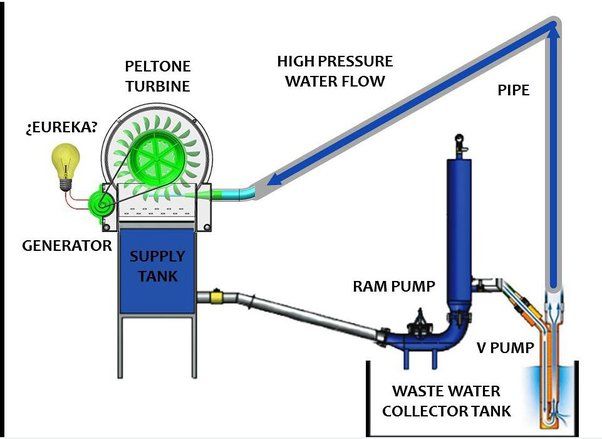
Hydropower relies on the water cycle
Hydropower depends on the continuous flow of water to generate electricity. This flowing water comes from Earth’s water cycle, also known as the hydrologic cycle. The water cycle describes the continuous movement of water within the planet through evaporation, condensation, precipitation, and collection.
The sun’s heat causes water on the earth’s surface like oceans, rivers, and lakes to evaporate and rise into the air as water vapor. As this vapor condenses into clouds, it falls back to the earth as precipitation in the form of rain or snow. This precipitation collects in bodies of water, seeps into the ground, or runs over land into streams, rivers and lakes. Gravity causes the water in rivers and streams to flow downhill back into the oceans, beginning the water cycle again.
This constant renewal of water supplies is essential for hydropower. Dams are constructed to collect and control water flow. The force of falling or flowing water rotates turbine blades in hydropower plants which then generates electricity. Without the continuous circulation of water in the water cycle providing rivers and streams, hydropower plants would not have access to the flowing water they require to produce electricity.
The water cycle connects all the earth’s water reservoirs from underground aquifers to the atmosphere. This interconnected system drives the renewable power of hydropower through the regenerative force of nature.
Dams and Reservoirs
Most hydropower requires dams and reservoirs to control water flow. Dams help control and store the water by creating reservoirs, allowing energy to be generated on demand. A large reservoir behind a hydropower dam stores potential energy in the form of water held at elevation. When the water is released through turbines connected to generators, the potential energy gets converted into electricity. The amount of electricity that can be generated depends on how far the water drops and how much water moves through the turbines per second.
According to the U.S. Energy Information Administration, in 2020 there were 2,215 hydropower facilities across the United States capable of generating over 80,000 megawatts of electricity. Many of the biggest facilities are located in the western part of the country where large rivers and elevation changes allow for gigantic dams and reservoirs. The Grand Coulee Dam in Washington state, for example, spans a quarter mile across the Columbia River and forms an enormous 151 mile long Lake Roosevelt behind it.
While dams and reservoirs enable reliable hydropower electricity generation, they can also have major environmental impacts. Damming a river and flooding a large area alters natural habitats and ecosystems. Fish migration can be hindered, and sediment flow downstream disrupted. However, new environmentally friendly techniques and mitigation strategies are being implemented to lessen hydropower’s footprint.
Source: https://www.csus.edu/indiv/k/kusnickj/2015supersirc/hydropower%20basics.docx
Other hydropower systems
In addition to traditional dam and reservoir systems, there are other types of hydropower systems that are utilized. Two of the main alternatives are run-of-river and pumped storage systems.
Run-of-river systems divert a portion of a river’s water through a canal or penstock to turbines that generate electricity. The water is then discharged back into the river downstream. These systems do not require large dams or reservoirs, just a small dam or weir to divert water. Run-of-river has less environmental impact compared to large dams and allows rivers to continue to flow freely (https://www.marinebio.org/conservation/hydropower/).
Pumped storage facilities pump water uphill to a reservoir at higher elevation during times of low electricity demand. Then when electricity demand is high, the water can be released downhill through turbines to generate electricity. This allows energy from the pumps to be stored as potential energy in the elevated reservoir (https://www.atlanticaenergy.org/hydroelectric-power-101/). Pumped storage provides a way to store energy and better balance electricity supply and demand.
Generating Electricity
Hydropower generates electricity from the energy of flowing water. Generally, a dam is constructed on a river to create a reservoir. The water in the reservoir has potential energy from being held at a height above the turbines. When the water is released from the reservoir, it flows down through large pipes called penstocks. As the water passes through the penstock, it gains speed and turns blades in a turbine to spin a generator. The generator then converts the mechanical energy into electrical energy. Modern hydroelectric plants can generate up to thousands of megawatts of electrical power.
According to the U.S. Department of Energy, “Hydropower uses a fuel—flowing water—that is not reduced or used up in the process. Because the water cycles through the environment, hydropower is considered renewable” (1). The power generated depends on the volume of water flow and the vertical drop (head). Larger reservoirs with greater water flow and height generate more electricity.
(1) How is hydropower used to generate electricity?, U.S. Department of Energy
Hydropower capacity
Hydropower is one of the main sources of renewable power worldwide. According to Statista, the total installed hydropower capacity worldwide in 2022 was approximately 1,308 gigawatts. The leading country by far is China, which had about 352 gigawatts of installed capacity as of 2022. Other major contributors include Brazil (109 GW), Canada (84 GW), and the United States (80 GW) [1].
The International Energy Agency (IEA) reports that hydropower accounted for around 16% of total electricity generation globally in 2019 [2]. The IEA expects over 75% of new hydropower capacity through 2030 to come from large-scale projects in Asia and Africa. Overall, global hydropower capacity is projected to grow by 17% between 2020 and 2030.
Environmental impacts
Hydropower can have significant environmental impacts, especially from large dam construction. Dams and reservoirs block fish migration routes, alter natural water temperatures and flow patterns, inundate habitats and ecosystems, and fragment river habitats (Source). However, hydropower is also considered a renewable and low-emission energy source that does not directly emit greenhouse gases. There are tradeoffs between providing renewable electricity and minimizing environmental damage that must be balanced.
Building large dams floods habitats upstream and alters river flows downstream, affecting wildlife, plants, and aquatic ecosystems. Dam reservoirs accumulate sediments and nutrients, changing downstream water quality and geomorphology. Reservoirs also emit greenhouse gases like methane from decaying organic matter (Source). Fish migration is blocked, preventing access to spawning grounds. Turbines can injure or kill fish.
However, hydropower emits much lower lifecycle greenhouse gas emissions compared to fossil fuels. It provided over 16% of global electricity in 2020 with minimal direct emissions. Though substantial impacts exist from large infrastructure, incremental hydropower additions on existing dams are lower impact. There are also more sustainable run-of-river systems. Overall, hydropower remains a major renewable electricity source globally.
Hydropower’s future
The outlook for hydropower in the United States is promising, but there are some challenges. According to the Hydropower Vision report from the Department of Energy, U.S. hydropower could grow from 101 gigawatts of capacity in 2015 to nearly 150 gigawatts by 2050. This growth would come through upgrades at existing plants, adding power generation to non-powered dams, and building new stream-reach development projects.
However, there are obstacles to realizing this growth potential. Upgrades and additions can be costly, and regulations around operating permits can make the economics challenging. Environmental concerns around dams and river ecosystems also come into play. Balancing energy production with healthy waterways will be an ongoing consideration.
Still, with the right policies and incentives, hydropower can continue expanding as a renewable, reliable energy source. Advancements in technology like advanced turbines and pumped storage will also open up new opportunities. The future is bright for hydropower to keep providing clean electricity in the U.S., but getting there will require surmounting some key hurdles.
Conclusion
In summary, hydropower does indeed rely on the water cycle. The water cycle continuously circulates water between the earth’s oceans, atmosphere, and land. This endless renewable cycle allows hydropower to harness the energy from flowing water to generate electricity. Dams and reservoirs store water and control its flow to power turbines and generators. Run-of-river systems also utilize the natural flow of rivers. Overall, hydropower provides a clean, renewable energy source by tapping into the endless recharging system of the water cycle. While it has some environmental impacts, hydropower will continue playing an important role in renewable energy production in the future. So in conclusion, without the renewability of the water cycle, hydropower would not be possible.

